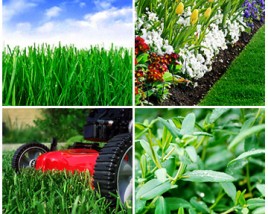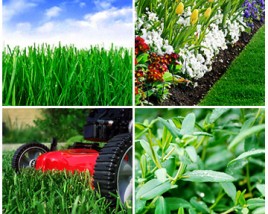Tips for Fall Lawn Care

The summer of 2013 has been much better for lawn care than last year considering the amount of rainfall this spring and milder, daily temperatures, said a University of Illinois Extension horticulture educator.
“The lawns have had a good year to recover, and lawns are looking so much better, yet there will always be some areas in the lawn that could be improved,” Richard Hentschel said. “With hot, dry summers come stressed lawns that allow weeds to move in. Lots of weeds had the opportunity to sprout or spread late in the season last year, and those weeds can still be out there.”

Fall Lawn Care
With this said, Hentchel suggested that fall is a good time to consider a weed control program. There are also other lawn care programs a homeowner should heavily consider such as fall Aeration and Seeding. “The added benefit of a fall treatment is that you get any new weeds that have sprouted this year as well as those already present in the lawn,” he said.
“If there are areas of the lawn that are so thin that they need to be reseeded, prepare those spots as if you were seeding for the first time. Often those areas are thin for reasons like soil compaction or that area is a bit lower than the rest of the lawn and water stands after a rain,” he added.
Compaction often occurs next to the drive apron where car tires miss the drive or from family members always stepping out of the car to go into the house in that location. “Sometimes it is the path the family uses to go from the back door to another spot in the yard. Just putting soil on top of compacted soil to get the seeds to sprout will be disappointing a few weeks later,” Hentschel explained.
Working the soil to 6 to 8 inches deep will relieve most of the compaction, he said. Also, using good topdressing material will keep the soil from returning to its former state.
Hentschel suggested that if the lawn is thin in an area that has standing water in an otherwise flat lawn, and compaction is not part of the concern, then lightly work the soil and add in additional organic matter to raise the depression.
“Sow those areas using a high-quality hybrid grass seed that exhibits good disease resistance,” he said. “Once the new seed receives water, keeping the soil evenly moist is the key for good seed emergence and development.”
Fall is a time when the grass begins to grow more rapidly as it did in the spring. Mowing may be needed again more than once a week. Mowing the lawn more often will keep it more competitive, Hentschel said.
“Consider raising the mower deck up a notch, leaving the lawn slightly longer. A longer grass blade can shade the soil and make more food for better overwintering, keeping a number of different weeds from sprouting,” he said.
Hentschel also recommends while you are adjusting the mower deck, examining the mower blade. “If the last time you sharpened the blade was way back in the spring, then it is time again! Any mower will leave a better-looking cut with sharp blades,” he said.
“Fertilizing the lawn can be an important part of keeping the lawn actively growing and healthy,” he noted. “The amount of fertilizers you apply is directly related to the amount of time you are going to spend taking care of the lawn throughout the whole season. If the decision is to only fertilize once per year with an inorganic fertilizer, fall is the preferred time.
“If you are caring for your lawn using organic products, then use the grass plant as the opportunity to get nutrition throughout the year and you will not see the big flush of growth so often associated with an inorganic fertilizer,” he said. “And if you need a mantra to take care of your lawn, it should be ‘mow high, mow often with a sharp blade,’ and many of our other lawn problems will be lessened.”
Source: Farmersadvance.com